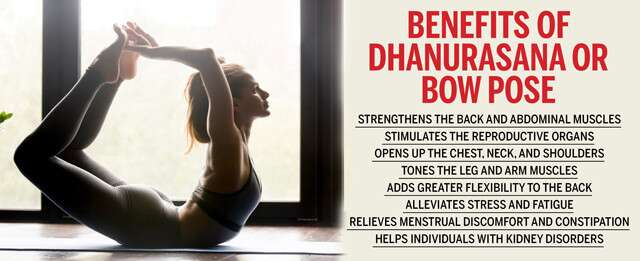
As an intermediate yoga pose, Dhanurasana can be a time-consuming pose to learn and practice if you are just starting off with yoga. A yoga practitioner and trainer Dr. Shilpa Patel says, “Dhanurasana, or bow pose, has been named after the shape the body takes while performing this asana, which is that of a bow.
‘Dhanu’ means bow and ‘asana’ means posture or pose. Just as a well-strung bow is an asset to a warrior, a well-stretched body helps keep you flexible with good posture. It is that determination and consistency that you will explore within yourself as you smoothly move into Dhanurasana.”
If you’re up for the challenge that Dhanurasana is, read on to find out more about this yoga pose.
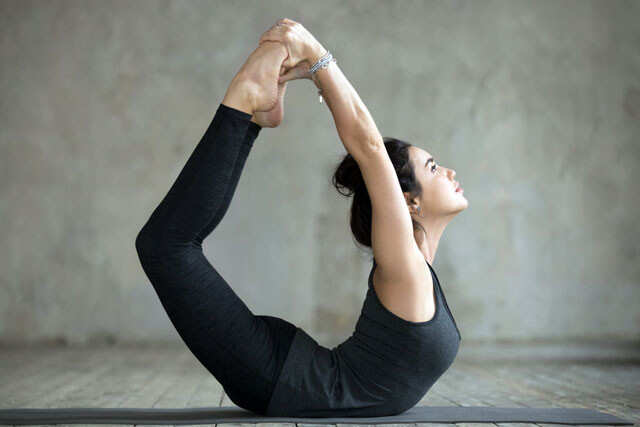
How To Perform Dhanurasana Or Bow Pose?
What Are The Variations Of Dhanurasana Or Bow Pose?
What Are The Benefits Of Dhanurasana Or Bow Pose?
Dhanurasana Or Bow Pose: FAQs
How To Perform Dhanurasana Or Bow Pose?
Dhanurasana mainly focuses on the spinal column, and, when it’s done with full intent, it strengthens your back and abdominal muscles. Dr. Patel provides a complete guide to performing this asana:- Lie on your stomach with your feet apart, in line with your hips, and your arms by the side of your body.
- Fold your knees, take your hands backward, and hold your ankles.
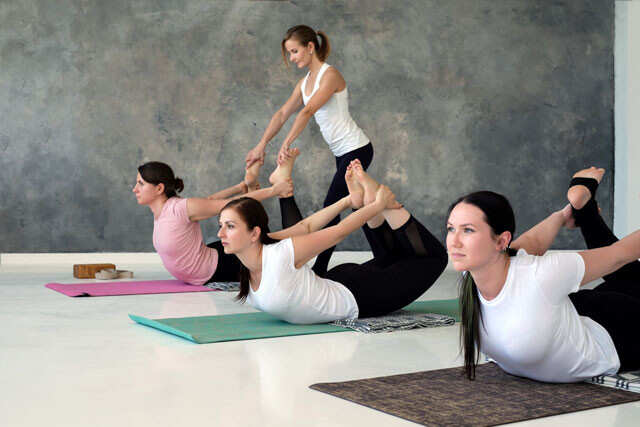
- Breathe in, lift your chest off the ground, and pull your legs up and towards the back.
- Look straight ahead with a smile on your face.
- Keep the pose stable while paying attention to your breath. Your body is now curved and as taut as a bow.
- Continue to take long, deep breaths as you relax in this pose, but bend only as far as your body permits you to. Do not overdo the stretch.
- After 15 to 20 seconds, as you exhale, gently bring your legs and chest to the ground. Release the ankles and relax.
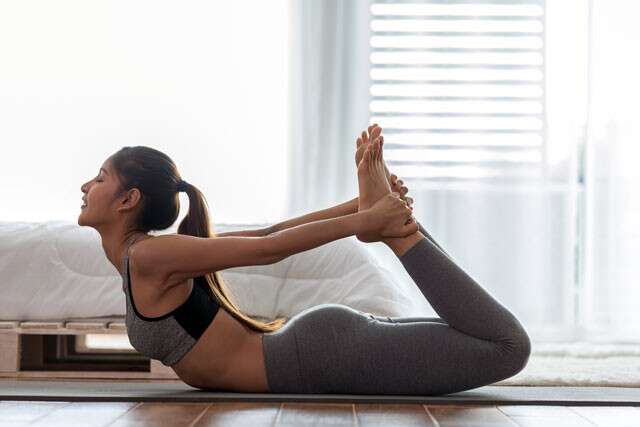
Tip: For beginners, it might be difficult to lift the thighs off the floor. You can roll a blanket and place it beneath your thighs for support. Some people also find it hard to grab and hold onto their ankles while practicing Dhanurasana. To deal with this problem, consider tying a cloth around your ankles and holding on to its edges as you train your body to become flexible enough for the perfect bow pose.
What Are The Variations Of Dhanurasana Or Bow Pose?
If practicing the classic form of Dhanurasana is uncomfortable, or if you just want to add an interesting spin to your daily workout routine, try the following variations of the bow pose.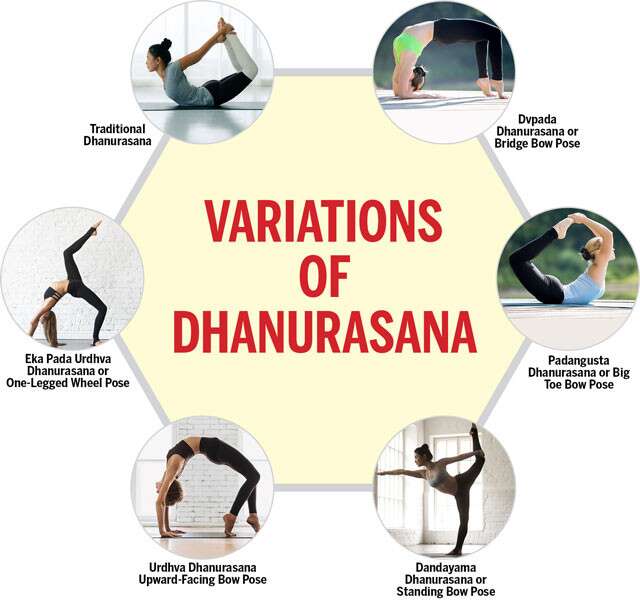
Tip: Whichever yoga asana you pick to practice, make sure to give yourself time to perfect it without pushing your body beyond its limits.
What Are The Benefits Of Dhanurasana Or Bow Pose?
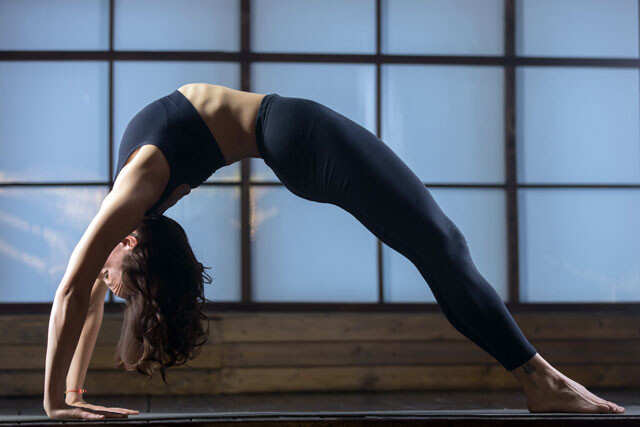
According to Dr. Patel, these are the benefits of the bow pose:
- In this asana, back bending will strengthen your back and abdominal muscles and enhance your spine, helping relieve pain. Moreover, it will help increase the flexibility of the back.
- The bow pose stimulates the reproductive organs and helps in improving menstrual disorders.
- It opens up the chest, neck, and shoulder muscles and tones them.

- Dhanurasana stretches the foot and hand muscles, and tones the leg and arm muscles and strengthens them.
- This yoga posture can alleviate stress, anxiety, and fatigue. It can also help in reducing the symptoms of depression by controlling the level of the cortisol hormone.
- It relieves menstrual discomfort and constipation.
- Practicing Dhanurasana daily can help people with kidney disorders.

Tip: Always consult your doctor or a certified yoga trainer before starting any new workout routine to your fitness regimen to protect yourself from injury.
Dhanurasana Or Bow Pose: FAQs
Q: Who should avoid performing Dhanurasana or the bow pose?
A: The following people should strictly avoid performing Dhanurasana:- Pregnant women
- People suffering from high blood pressure or low blood pressure
- People with hernia or recent abdominal surgeries
- Those suffering from severe lower back pain
- Those who have migraine and headaches
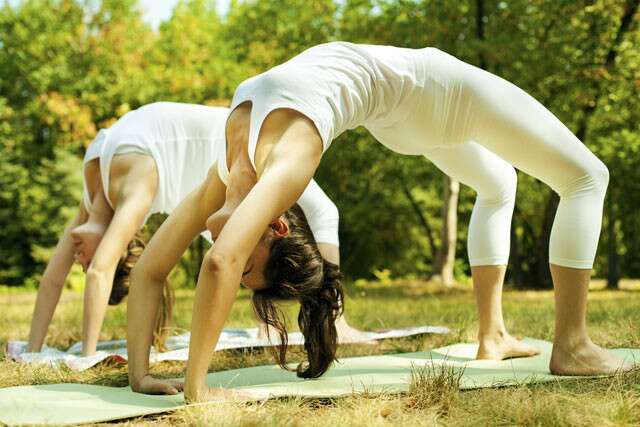
Q: Are there any specific tips for Dhanurasana or bow pose beginners?
A: Bear these pointers in mind:- Pay attention to your breath; breath slowly while performing this pose.
- Bend as far as possible, start slow and stay gentle with your body.
- Do not hold the ankles if you feel uncomfortable. You can use a strap if you are unable to hold your ankles.
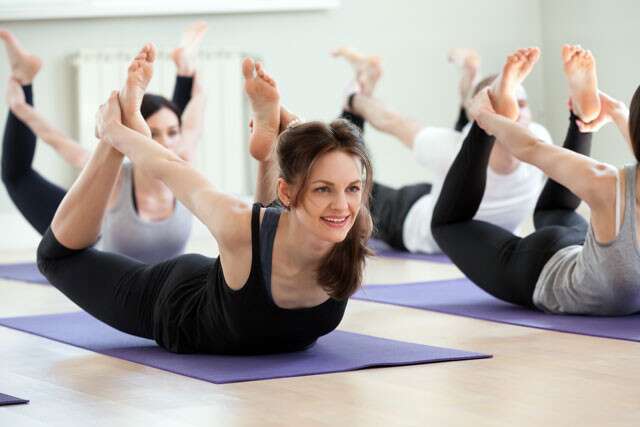
Image: Shutterstock
Q: How can I maximize the health benefits of Dhanurasana or the bow pose?
A: Gaining maximum benefits from practicing Dhanurasana is only possible when you are in an ideal physical state as well as performing this yoga pose at a specific time.- Remember these tips:
- Make sure you perform this yoga asana four to five hours post a meal.
- It is always best to practice Dhanurasana or the bow pose in the morning; in case you can’t do so, practice it in the evening.
- Ensure that you have done your warm-up exercises before performing this yoga asana.
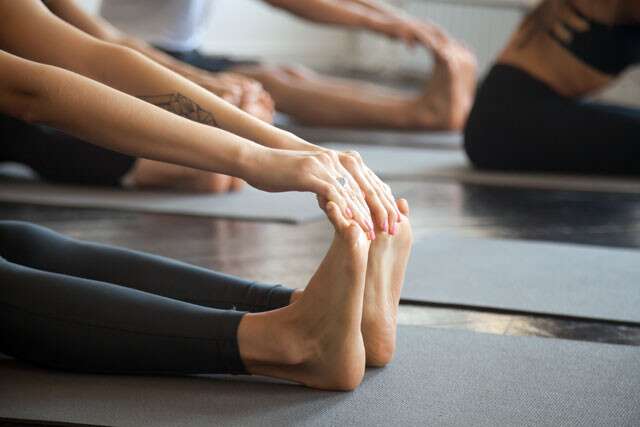
Read more: Targeting Fat Loss In Specific Parts Of The Body: Fact Or Fiction?
- Editor
- Reviewer

Khushali Thakar

Dr Shilpa Patel
An author and a passionate Corporate Trainer with 8+ years of experience in grooming more than Read More
Body Mass Index (BMI) Calculator
Next Story